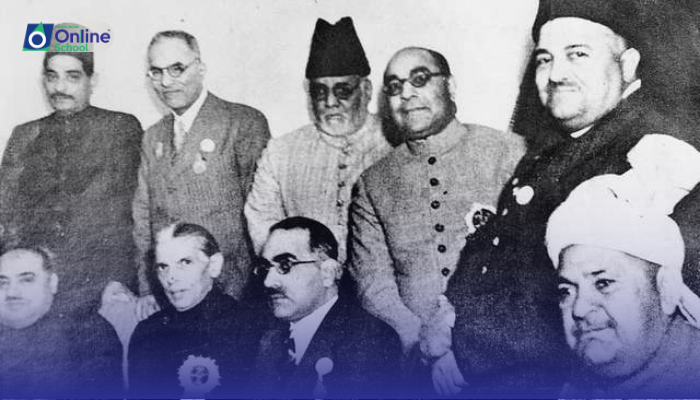
Background
The following events paved way for the establishment of the All India Muslim League:
i. Establishment of the British System of Government: The system introduced after the establishment of the British Government in the year 1858, was democratic in nature. Since the Hindus outnumbered the Muslims in Indian population they were on a surer ground under the new political system. The British had already crippled the Muslims economically. If a system based on majority rule, pure and simple, were established the Muslims were surely going to lose. This state of affairs called for a Muslim political platform to voice Muslim demands effectively.
ii. Hindu Extremism: We have already learnt about Urdu-Hindi Controversy spurred by the Hindus in 1867, the Hindus demanded replacement of Urdu by Hindi as official language. During the same period, Hindu extremists started programmes like the "Arya Samaj" with a purpose to reconvert the Muslims into Hindu religion. Hindu writers spread hatred against the Muslims among their followers.
iii. Establishment of the Indian National Congress: A retired British Civil Servant A.O. Hume established the Indian National Congress in the year 1885. The Hindus welcomed it enthusiastically and joined it in great numbers.
iv. Demand for Separate Electorate: Sir Sayyid believed that the British systemof elections, pure and simple, did not suit the Indian conditions, because this will reduce the Muslims to a position of permanent slavery and subservience to the majority community. He proposed the system of separate electorate as an alternative. This system obviously could not be made useful unless the Muslims had a political party of their own.
v. Partition of Bengal and the Congress Attitude: In the year 1905, the British government divided the province of Bengal into two parts. Since the newly created province of East Bengal had a Muslim majority, the Muslims were to benefit from this partition. Hindus launched a strong protest against this decision of the government throughout India. The province of Bengal was the main target of the saboteurs. The Muslims were greatly disappointed when they saw that the Congress, notwithstanding all its claims of neutrality, was supporting the Hindu extremists openly.
vi. Change of Government in Britain: Liberal Party returned to power in the 1905 elections held in Britain. The party gave a programme of political reforms meant for India. The Muslim leaders discussed the situation and decided to make a common cause for taking up the demands of the Muslim community with the government.
vii. The Simla Deputation: Thirty-five top ranking Muslim leaders taken from all parts of the Sub-Continent called on the then Viceroy Lord Minto at Simla on Oct. 1, 1906. Important Muslim demands presented to the Viceroy included; reserved quota of seats for Muslims in all representative bodies and separate electorate; The Viceroy expressed sympathy with the Muslim demands and promised to take them up with the British Government. The Muslim leaders were greatly encouraged by the Viceroy's response.
Foundation of the All India Muslim League
A session of the All India Muhammadan Educational Conference was held under the chairmanship of Nawab Viqar-ul-Mulk in December 1906 at Dacca. Resolution for the establishment of All India Muslim League was moved in this meeting by Nawab Salim- Ullah Khan and was seconded by Maulana Zafar Ali Khan, Hakeem Ajmal Khan and Maulana Muhammad Ali (Johar). Sir Agha Khan was made the first president.
Objectives
At the time of its formation the Muslim League had set a three-point agenda;
i. To safeguard and protect the interests of the Indian Muslims; to convey their demands to the British government in a peaceful manner and through constitutional means.
ii. To create feelings of respect and goodwill for the government amongst the Muslims and to remove any misunderstanding, they might have, regarding government's Policies and actions.
iii. To create feelings of brotherhood among the Muslims and other Indian communities.
Change of Objectives
In March 1913 changes in the objectives of the All India Muslim League were made on Quaid-e-Azam's initiative. Policy of unconditional subservience was forsaken in the favour of "self-government suitable for Indian conditions". This proved to be a turning point in the history of the Muslims of India.